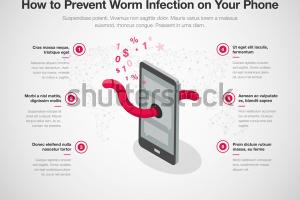Effective Strategies to Remove Worm Viruses from Your Computer

-
Quick Links:
- Introduction
- Understanding Worm Viruses
- Symptoms of Infection
- How Worms Infect Your System
- Removing Worm Viruses
- Preventing Future Infections
- Case Studies
- Expert Insights
- FAQs
Introduction
Worm viruses are a significant threat to computer systems, as they can replicate themselves and spread across networks without human intervention. In this comprehensive guide, we will explore what worm viruses are, how they infect systems, and most importantly, effective strategies for their removal. By the end of this article, you will be equipped with the knowledge to protect your devices from these malicious entities.
Understanding Worm Viruses
A worm virus is a type of malware that spreads copies of itself from computer to computer. Unlike a typical virus, a worm can spread without requiring a host file. Worms often exploit vulnerabilities in software or operating systems to propagate.
Characteristics of Worm Viruses
- Self-replicating: Worms can create copies of themselves.
- Networked: They spread through network connections.
- Payloads: Some worms carry malicious payloads like ransomware or spyware.
Symptoms of Infection
Identifying a worm virus infection early can help mitigate damage. Here are common symptoms:
- Slower computer performance.
- Frequent crashes or freezes.
- Unexplained network activity.
- Unauthorized access to files or data.
How Worms Infect Your System
Worms typically exploit security vulnerabilities in software or operating systems. They can also spread through:
- Email attachments.
- Malicious downloads.
- Infected USB drives.
Removing Worm Viruses
The removal of a worm virus can be complex, but by following these step-by-step instructions, you can clear your system of infection:
Step 1: Disconnect from the Internet
Immediately disconnect your device from the internet to prevent further spreading of the worm.
Step 2: Boot into Safe Mode
Restart your computer in Safe Mode to limit the functions of the worm.
- For Windows: Press F8 during boot-up and select 'Safe Mode with Networking'.
- For Mac: Hold the Shift key while booting.
Step 3: Use Antivirus Software
Run a full system scan using reliable antivirus software. If you don’t have antivirus installed, consider using a reputable online scanner.
Step 4: Remove Suspicious Files
After the scan, follow the instructions to remove infected files. Be cautious with files flagged as suspicious.
Step 5: Update Your System
Ensure your operating system and all software are updated to patch any vulnerabilities.
Preventing Future Infections
Prevention is key in cybersecurity. Here are steps to protect yourself from future worm attacks:
- Install and regularly update antivirus software.
- Avoid clicking on unknown email links or attachments.
- Use a firewall to monitor incoming and outgoing traffic.
- Regularly update your software and operating systems.
Case Studies
Let's explore some real-world cases of worm infections and their resolutions:
Case Study 1: The ILOVEYOU Worm
In 2000, the ILOVEYOU worm spread through email, causing an estimated $10 billion in damages worldwide. The worm was disguised as a love letter, prompting users to open it without hesitation. Its removal required extensive software updates and user education.
Case Study 2: The Conficker Worm
Conficker infected millions of computers and created a botnet. It exploited a vulnerability in Windows and required coordinated efforts from cybersecurity experts to eradicate it. Users were advised to update their systems and employ robust security measures.
Expert Insights
Cybersecurity experts emphasize the importance of education in preventing worm infections. Dr. Jane Doe, a leading cybersecurity researcher, states, "The best defense against worm viruses is a well-informed user." Regular training and awareness sessions can significantly reduce the risk of infection.
FAQs
What is a worm virus?
A worm virus is a type of malware that replicates itself to spread to other computers, often exploiting security vulnerabilities.
How can I tell if my computer has a worm virus?
Symptoms include slow performance, frequent crashes, and unauthorized network activity.
Can I remove a worm virus by myself?
Yes, by following the steps outlined in this guide, you can effectively remove a worm virus from your system.
Is antivirus software enough to prevent worm infections?
While antivirus software is crucial, maintaining good security practices and keeping software updated is equally important.
What should I do if my antivirus can't remove the worm?
Consider seeking professional help or using specialized malware removal tools if your antivirus fails to eliminate the threat.
Can worms damage my files?
Yes, some worms carry malicious payloads that can corrupt or delete files.
How do worms spread through networks?
Worms can exploit vulnerabilities in network protocols to propagate across connected devices.
Are all worm infections the same?
No, worm infections can vary significantly in their behavior, payload, and method of distribution.
How often should I update my antivirus software?
You should update your antivirus software daily to protect against new threats.
What is the difference between a worm and a virus?
A worm can spread independently, while a virus requires a host file to propagate.
Random Reads
- How to age faster on sims 3
- How to evolve cubone pokemon sun moon
- How to sync kindle fire
- How to uninstall google chrome
- How to uninstall firefox from any device
- How to make a gate in minecraft
- How to make a furnace in minecraft
- How to play grand theft auto 5 story mode
- How to play games on lan
- How to edit xml files